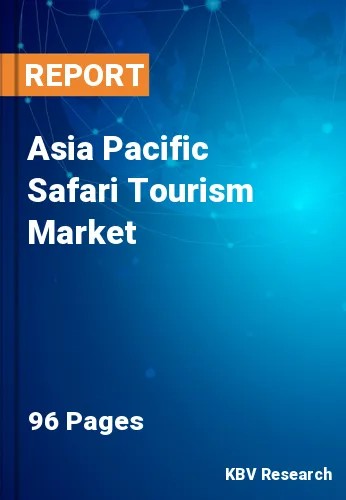The Asia Pacific Safari Tourism Market would witness market growth of 5.6% CAGR during the forecast period (2023-2030).
It has been noted that this tourism attracts multigenerational families that want to bond and share memorable experiences in the wilderness. Many safari operators provide family-friendly accommodations, specialized guides, and activities suitable for different age groups. Moreover, travelers increasingly seek lesser-known and remote safari destinations, moving away from crowded areas. They are looking for exclusive and off-the-beaten-path experiences, exploring hidden gems that offer unique wildlife encounters and untouched natural beauty.
There is a growing demand among travelers for customized safari experiences that accommodate their individual interests, preferences, and travel inclinations. They prefer itinerary planning, lodging selection, and activity flexibility, enabling them to curate unique and customized safari experiences. Consequently, in response to this inclination, industry participants, including Abercrombie & Kent USA, LLC, Scott Dunn Ltd., &beyond, modify their offerings to provide travelers with an extensive selection of choices that align with their preferences. This personalized experience contributes to the utmost contentment of safari visitors.
The Asia Pacific region has many national parks and wildlife reserves. For example, in India, The Sundarbans, a UNESCO World Heritage Site, is the biggest mangrove forest in the world, spanning India and Bangladesh. It is home to the Bengal tiger, saltwater crocodile, and various bird species. Similarly, in Australia, Kakadu National Park in the Northern Territory of Australia is known for its vast wetlands, Aboriginal rock art sites, and diverse wildlife. Visitors can spot crocodiles, water birds, kangaroos, and other native species. Moreover, Great Barrier Reef Marine Park is the world's biggest coral reef system, located off the coast of Queensland, Australia. The factors mentioned above will propel market growth in this region.
The China market dominated the Asia Pacific Safari Tourism Market by Country in 2022, and would continue to be a dominant market till 2030; thereby, achieving a market value of $2,559.4 million by 2030. The India market is registering a CAGR of 6.1% during (2023 - 2030). Additionally, The Japan market would showcase a CAGR of 4.7% during (2023 - 2030).
Based on Tourism Type, the market is segmented into Adventure Safari, Private Safari, and Others. Based on Group, the market is segmented into Couples, Friends, Families, and Solos. Based on Booking Mode, the market is segmented into Direct Booking, Agents & Affiliates Account, and Marketplace Booking. Based on countries, the market is segmented into China, Japan, India, South Korea, Australia, Malaysia, and Rest of Asia Pacific.
Free Valuable Insights: The Global Safari Tourism Market is Predict to reach $49.3 Billion by 2030, at a CAGR of 5.4%
The market research report covers the analysis of key stake holders of the market. Key companies profiled in the report include Wilderness Holdings Limited (African Wildlife Holdings Partnership), Thomas Cook (India) Limited (Fairfax Financial Holdings Limited), Singita Group, Scott Dunn, Rothschild Safaris, Micato Safaris, TUI AG, Abercrombie & Kent USA, LLC, Butterfield & Robinson, Inc. and Backroads
By Tourism Type
By Group
By Booking Mode
By Country
Our team of dedicated experts can provide you with attractive expansion opportunities for your business.

